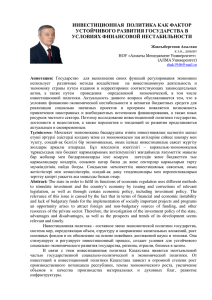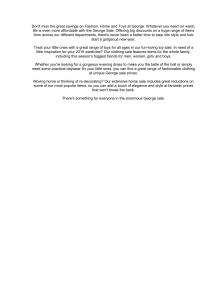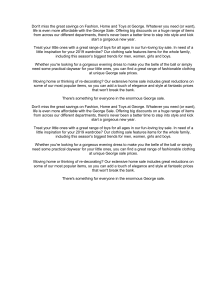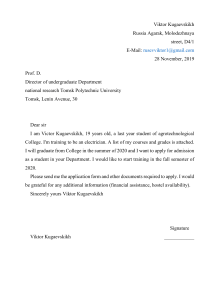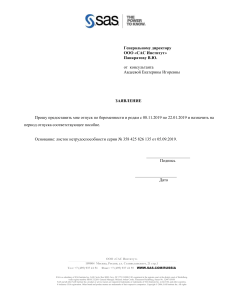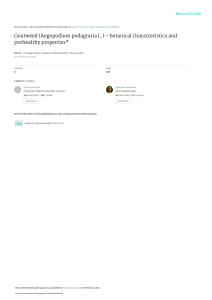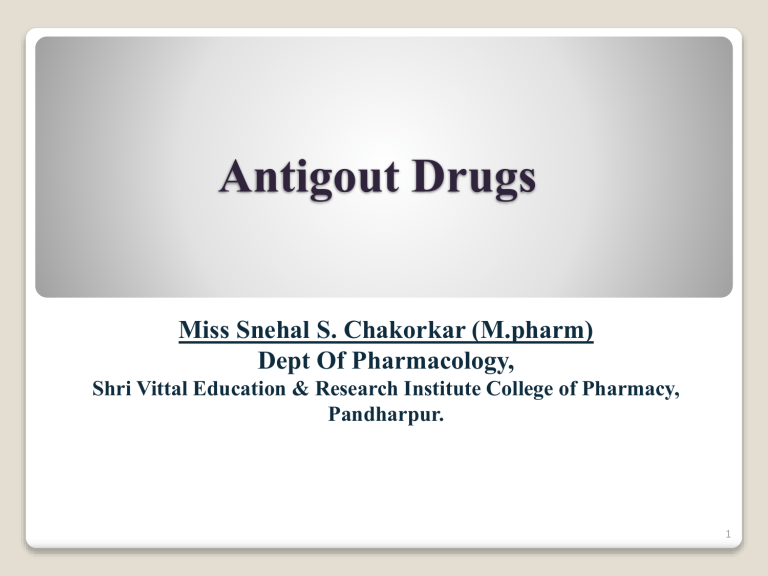
Antigout Drugs Miss Snehal S. Chakorkar (M.pharm) Dept Of Pharmacology, Shri Vittal Education & Research Institute College of Pharmacy, Pandharpur. 1 Introduction To Gout Definition: Gout is metabolic disease in which plasma urate concentration get increased (hyperuricaemia), ( Normal urate level: 1-4 mg/dl). Uric acid is product of purine metabolism at low pH (acidic) has low water solubility. When urate level increases in blood it gets precipitates and deposits in joints, kidney and cutaneous tissue which is called as tophy. Ref: https://curearthritis.org/gout/ 9/12/2019 2 Causes: Overdrinking of alcoholic beverages, especially beer, or purine-rich foods. Leukaemia's, lymphomas, polycythaemia condition treated with chemotherapy radiation causes enhanced nucleic acid metabolism and uric acid production. Drug like thiazides, furosemide, pyrazinamide, ethambutol, levodopa, clofibrate reduce uric acid excretion by kidney and produces gout. 9/12/2019 3 Antigout drugs These are the drugs which are used in treatment of gout condition which are acts by one of the following mechanism: By Inhibiting Uric acid synthesis ( Allopurinol). Increasing Uric acid excretion (Probencid, Sufinpyazone). Inhibiting leukocyte migration toward joint (Colchicine). Providing general NSAID’s action (Glucocorticoids). Classification For acute gout: Acute gout is a painful condition that often affects only one joint. Drugs used are Ex- NSAID’s, Colchicine, Glucocorticoids. For chronic gout/ hyperuricaemia: Chronic gout is the repeated episodes of pain and inflammation. More than one joint may be affected Ex- Probencid, Sufinpyazone, Allopurinol 9/12/2019 4 1. NSAID’s drugs Various drugs used are indometahcin, naproxen, piroxicam, diclofenac or etoricoxib given at high and repeated dose to terminate attack. Produces responses slow as compared to colchicine but well tolerated so more preferred than colchicine. Naproxen, piroxicam inhibits chemotactic migration of leucocytes into the inflamed joint. But not recommended for long term management due to risk of toxicity. 9/12/2019 5 2. Colchicine Alkaloid from Colchicum autumnale / autumn crocus found as antigoute in 1763 and isolated as pure form in 1820. Not having anti-inflammatory or analgesic activity but used specifically in treatment of gouty inflammation. First dated information of colchicine was available in Ebers Papyrus/Papyrus Ebers and it was written in about 1500 BC). 9/12/2019 6 * Process of gouty inflammationPrecipitation of urate crystals in synovial fluid Start inflammatory response By producing Chemotactic factors Migration of granulocytes in to joints Which phagocytose (engulf) urate crystals Release glycoprotein Increases lactic acid production form inflamed cell Release lysosomal enzyme Decreases PH Joint destruction More urate crystals get precipitate and affect joint 9/12/2019 Aggrevates/ Worsen inflammatory condition 7 * Mechanism of action Colchicine: Precipitation of urate crystals in synovial fluid Colchicine Bind to fibrillar protein tubulin Depolymerisation of microtubules Decreases cell motility Start inflammatory response By producing Chemotactic factors Prevent Migration of granulocytes in to joints Symptomatic relief for gout 9/12/2019 8 Other actions of Colchicine: Antimitotic: Binding to microtubules of mitotic spindle metaphase arrest tried for cancer chemotherapy But causes toxicity. Gut action: gut motility through neural mechanism. Pharmacokinetics: • Absorption: Rapid orally. • Distribution: Uniform. • Metabolism: Liver • Elemination: bile-undergoes enterohepatic circulation, Urine & faeces. 9/12/2019 9 * Toxicity of Colchicine: High and dose related. At therapeutic dose: Nausea, vomiting, watery or bloody diarrhoea and abdominal cramps. Accumulation of the drug in intestine and inhibition of mitosis . In overdose: colchicine produces kidney damage, CNS depression, intestinal bleeding; death is due to muscular paralysis and respiratory failure. Chronic therapy: Not recommended because it causes aplastic anaemia, agranulocytosis, myopathy and loss of hair. 9/12/2019 10 * Drug interaction with other drug: Colchicine shows interaction with; Sr . No. 1. 2. 3. 4. 5. Category of drug Example from class Cholesterol drugs atorvastatin, fluvastatin, lovastatin, gemfibrozil Antiarrhythmic drug. Digoxin, HIV drugs, indinavir, atazanavir, nelfinavir, saquinavir, or ritonavir. Antidepressressants nefazodone. Antibiotics, clarithromycin or telithromycin 6. Antifungal drugs Serious muscle damage. ketoconazole or itraconazole. Increases concentrationof colchicine verapamil or diltiazem stomach pain, constipation, diarrhea, nausea, or vomiting. 7. Calcium channel blocker Interaction 9/12/2019 11 * Use of Colchicine: 1. Treatment of acute gout: Best drug to control an acute attack of gout, 1 mg orally followed by 0.25 mg 1-3 hourly till control of the attack. 2.Prophylaxis condition of gout: Colchicine 0.5-1 mg/day prevent gout attack but now a days NSAID’s are preferred. 3. Other uses: Used in plant breeding by inducing polyploidy ( state of a cell or organism having more than two paired) in plant cells for new or improved varieties, strains and cultivars. 9/12/2019 12 3. Corticosteroid Intraarticular injection of soluble steroids suppress symptoms of acute gout. Corticosteroids decrease the pain, swelling, redness and (inflammation) of gout. But Corticosteroids are used only for patients suffering from renal failure or peptic ulcer( Bcause NSAID’s are contraindicated). Risk of rebound of attack is observed on drug withdrawal. Example; Prednisolone 40-60 mg given once a day. 9/12/2019 13 4. Probenecid Lipid soluble organic acid developed in 1951. *Mechanism of action Probenecid: Probenecid Uric acid Block Active transport of organic acid By Blocking OATP ( organic anion transporting polypeptide receptor) Inhibit Reabsorbed by active transport Causes excretion 9/12/2019 14 *Pharmacokinetics: Absorption: Rapid orally. Distribution: 90% bound to plasma protein Metabolism: Liver Elimination: Urine. *Drug interaction with other drug: Probenecid shows interaction with; Sr . No. 1. Category of drug Example from class Interaction Antibiotics penicillins, cephalosporins, sulfonamides, 2. NSAID’s Indomethacin, salicylates Inhibits the urinary excretion 3. Antibiotics rifampicin. Biliary excretion nitrofurantoin Inhibits tubular secretion of drug 4. Antimicrobial 9/12/2019 15 * Toxicity of Probenecid : Dyspepsia (indigestion). Rashes and other hypersensitivity . Toxic doses cause convulsions and respiratory failure. * Use of Probenecid: Chronic gout and hyperuricaemia: second line or adjunct drug to allopurinol. 0.25 g-0.5g BD gradually lower blood urate level along with arthritis, tophi and other lesions but ineffective during renal insufficiency. Plenty of fluids should be given with probenecid to avoid urate crystallization in urinary tract. Prolong drug action: Probenecid is also used to prolong penicillin or ampicillin action by enhancing and sustaining their blood levels, e.g. in gonorrhoea, Subacute bacterial endocarditis (SABE). 9/12/2019 16 5. Sulfinpyrazone It is a pyrazolone derivative related to phenylbutazone having consistent uricosuric action. Not having anti-inflammatory or analgesic activity but used specifically in treatment of gouty inflammation. * Mechanism of action Sulfinpyrazone: • It inhibits ttubular reabsorption of uric acid • Also inhibits platelet aggregation. * Pharmacokinetics: • Absorption: Rapid orally. • Distribution: 98% bound to plasma protein. • Elemination: active secretion in proximal tubule Urine. 9/12/2019 17 *Drug interaction with other drug: Sulfinpyrazone shows interaction with; Sr . No. 1. 2. Category of drug oral anticoagulant Example from class Interaction warfarin increase the effects tolbutamide 3. Anti asthmatic theophylline worsening asthma 4. Calcium channel blocker verapamil high blood pressure or an irregular heartbeat. * Adverse effect of Sulfinpyrazone: Gastric irritation so contraindicated in patients with peptic ulcer. Rashes and other hypersensitivity reactions. At overdose convulsions, coma, anaemia, jaundice, and ulceration. * Use of Sulfinpyrazone: Used in treatment of chronic gout 100-200mg BD 9/12/2019 18 6. Allopurinol This hypoxanthine analogue was synthesized a purine antimetabolite for cancer chemotherapy it had no antineoplastic activity. It has substrate as well as inhibitor of xanthine oxidase, the enzyme responsible for uric acid synthesis. Allopurinol Hypoxanthine Xanthene oxidase Xanthene oxidase Alloxanthene Inhibit both steps xanthine Xanthene oxidase Uric acid 9/12/2019 19 * Pharmacokinetics: • Absorption: Rapid orally. • Distribution: Not bound to plasma protein. • Metabolism: During chronic administration inhibit self metabolism. • Elemination: 1/3 excreted as unchanged form in urine. *Drug interaction with other drug: Allopurinol shows interaction with; Sr . No. 1. Category of drug Example from class Interaction Anticancer f 6-mercaptopurin & azathioprine Allopurinol prevent degradation of all drugs 2. Uricosurics Probenecid kidney or liver disease 3. Anti asthmatic theophylline skin rashes Haematinics Iron therapy mobilization of hepatic iron stores 4. 9/12/2019 20 * Adverse effect of Allopurinol: Hypersensitivity- rashes fever, malaise and muscle pain. Stevens-Johnson syndrome(serious disorder of the skin and mucous membranes. painful red or purplish rash) Gastric irritation, headache, nausea and dizziness infrequent Liver damage. * Use of Allopurinol: • Drug of choice in Chronic gout. • To potentiate 6-mercaptopurine or azathiopurine- During cancer therapy and immunosuppressant therapy. • In treatment of Kala-azar- Inhibit leishmania by altering purine metabolism. 9/12/2019 21 Any query don’t hesitate to contact & If9/12/2019 like then comment in box 22
